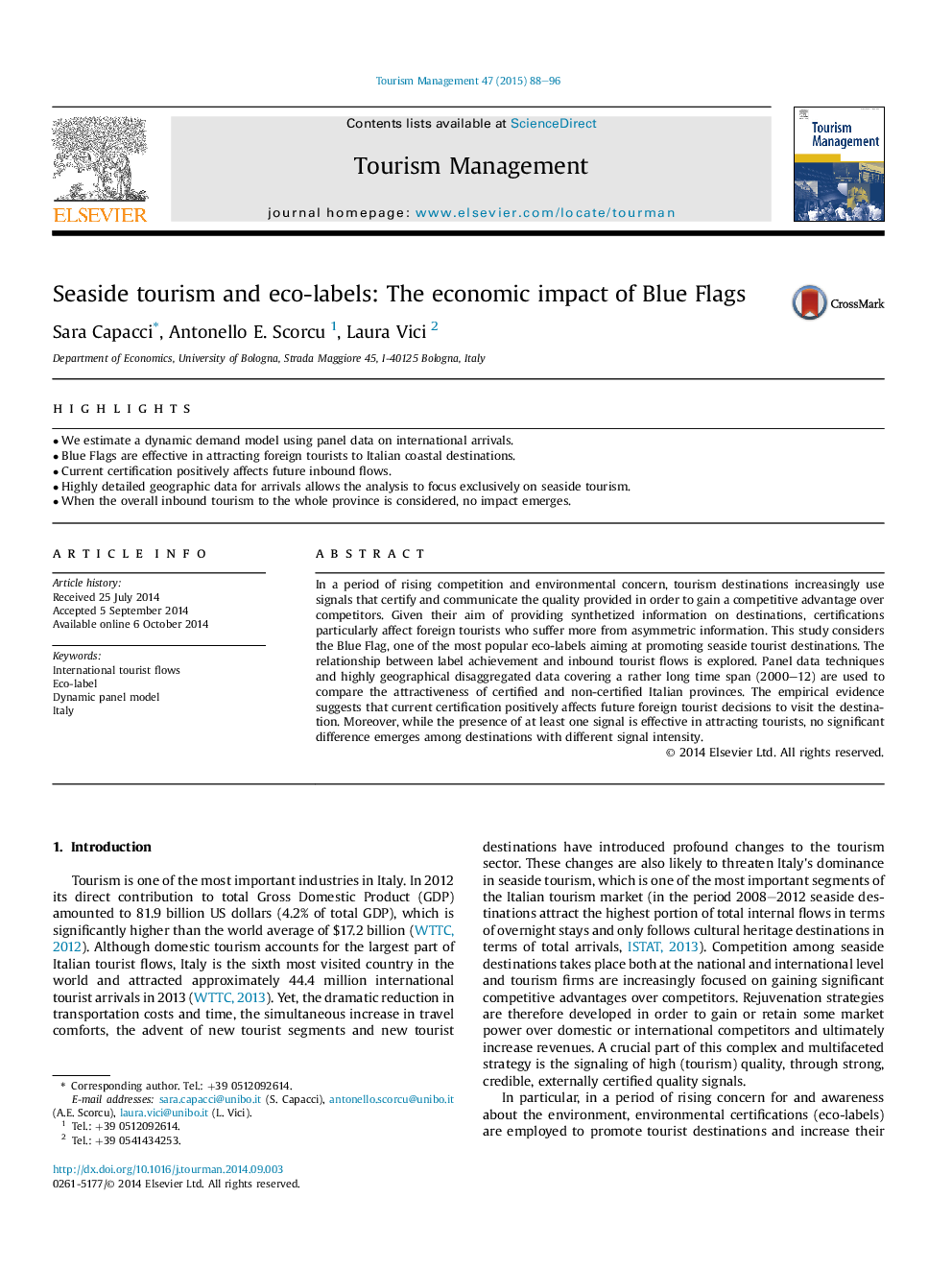| Article ID | Journal | Published Year | Pages | File Type |
|---|---|---|---|---|
| 1011963 | Tourism Management | 2015 | 9 Pages |
•We estimate a dynamic demand model using panel data on international arrivals.•Blue Flags are effective in attracting foreign tourists to Italian coastal destinations.•Current certification positively affects future inbound flows.•Highly detailed geographic data for arrivals allows the analysis to focus exclusively on seaside tourism.•When the overall inbound tourism to the whole province is considered, no impact emerges.
In a period of rising competition and environmental concern, tourism destinations increasingly use signals that certify and communicate the quality provided in order to gain a competitive advantage over competitors. Given their aim of providing synthetized information on destinations, certifications particularly affect foreign tourists who suffer more from asymmetric information. This study considers the Blue Flag, one of the most popular eco-labels aiming at promoting seaside tourist destinations. The relationship between label achievement and inbound tourist flows is explored. Panel data techniques and highly geographical disaggregated data covering a rather long time span (2000–12) are used to compare the attractiveness of certified and non-certified Italian provinces. The empirical evidence suggests that current certification positively affects future foreign tourist decisions to visit the destination. Moreover, while the presence of at least one signal is effective in attracting tourists, no significant difference emerges among destinations with different signal intensity.
